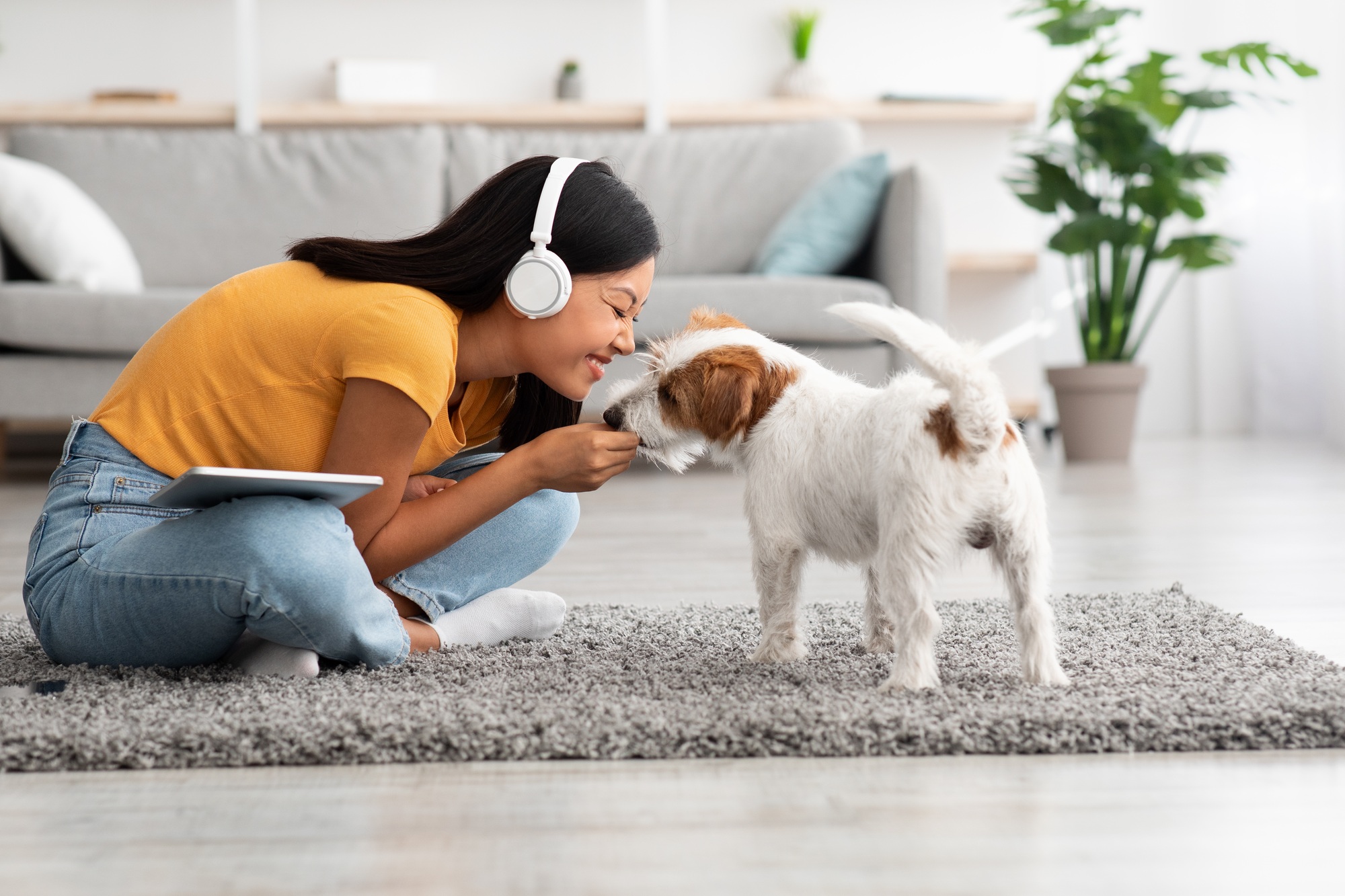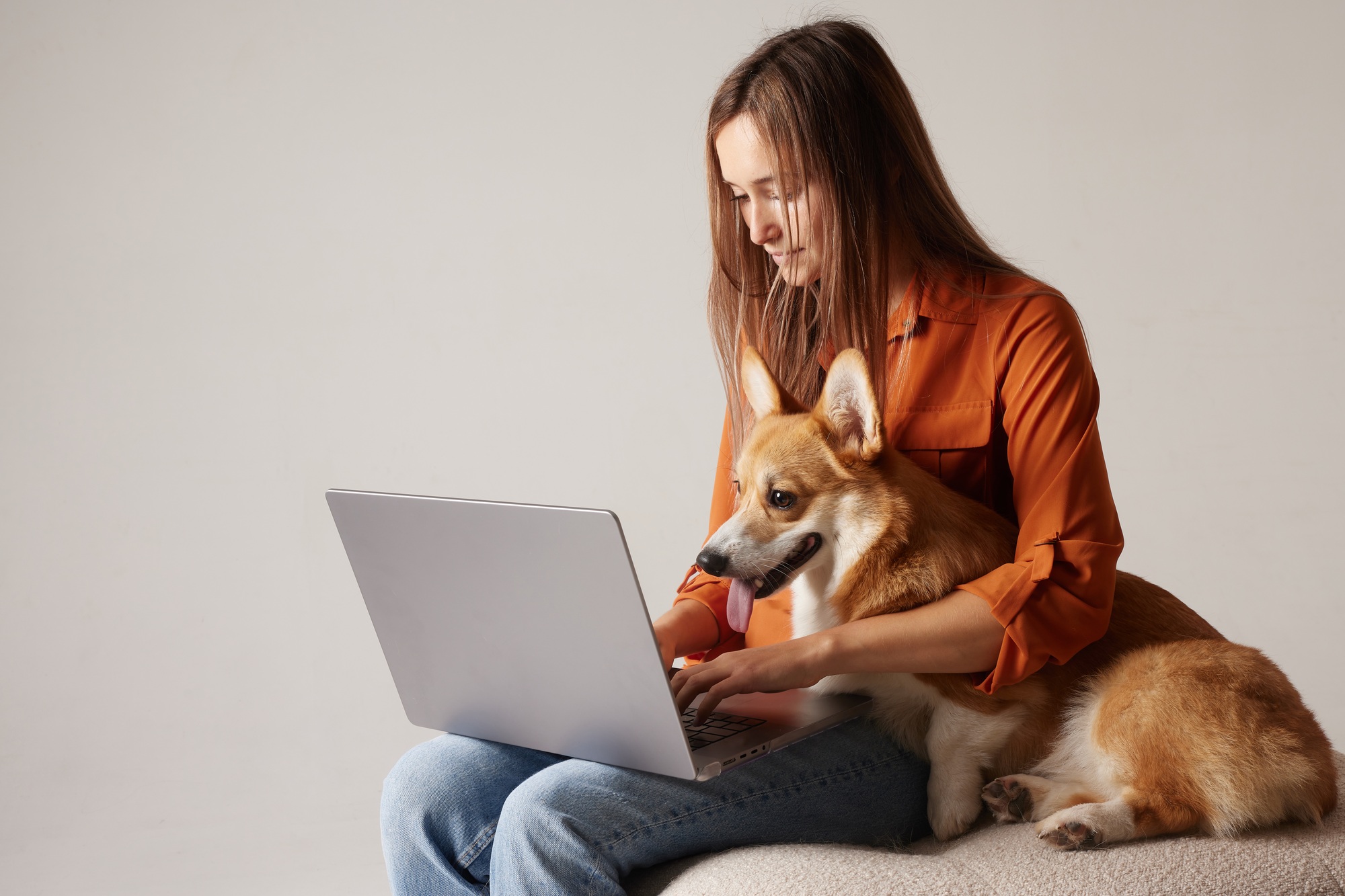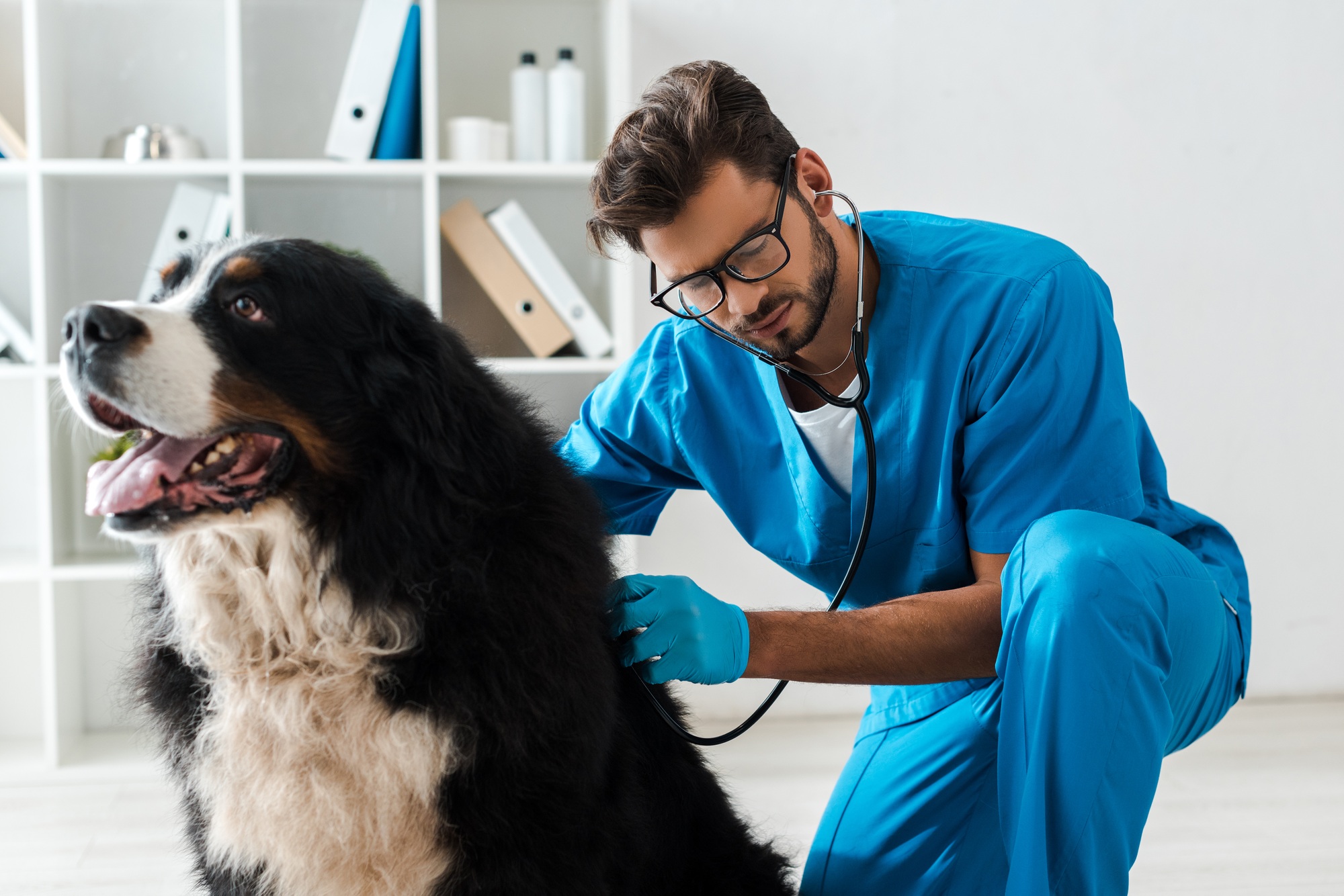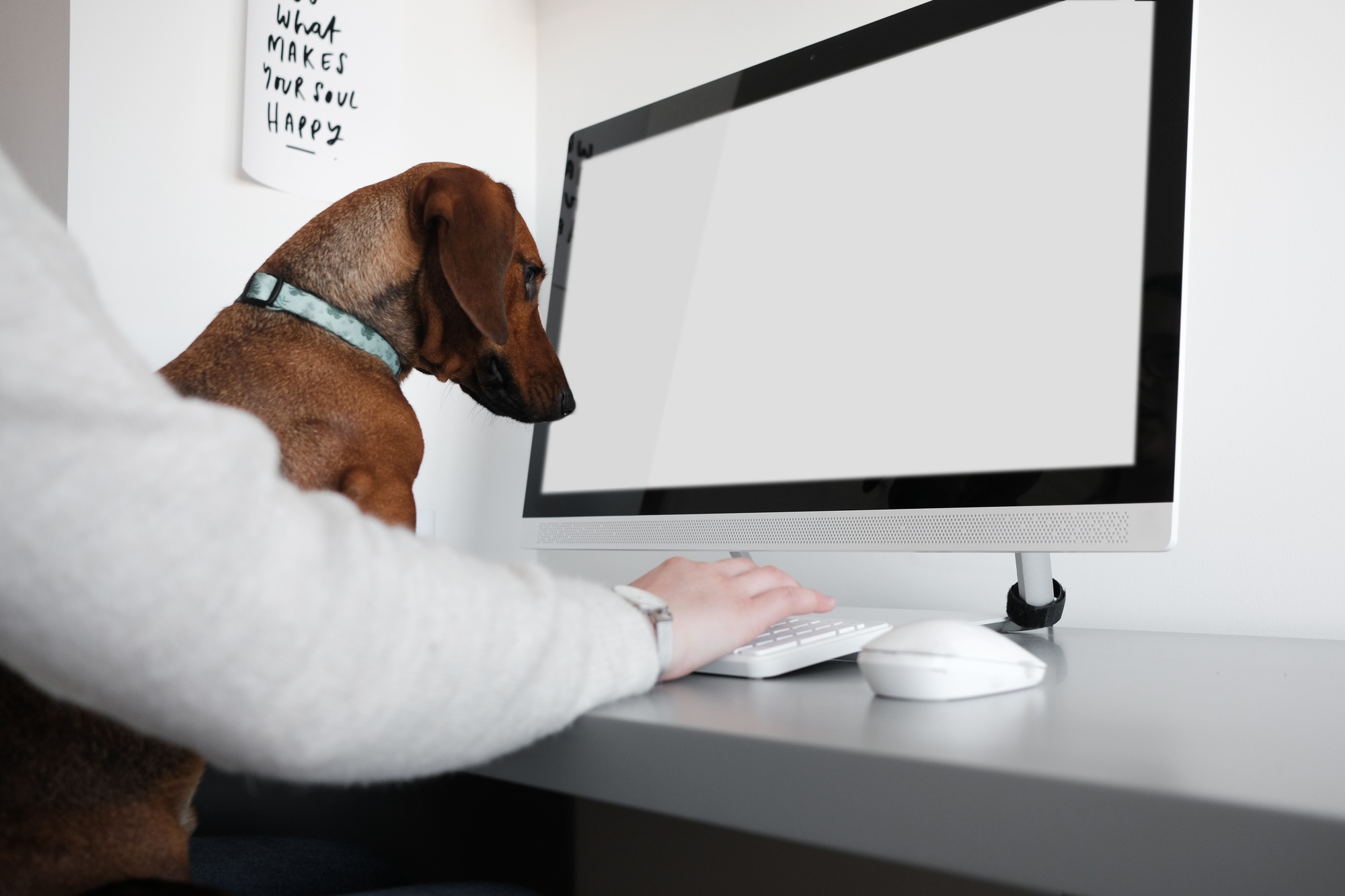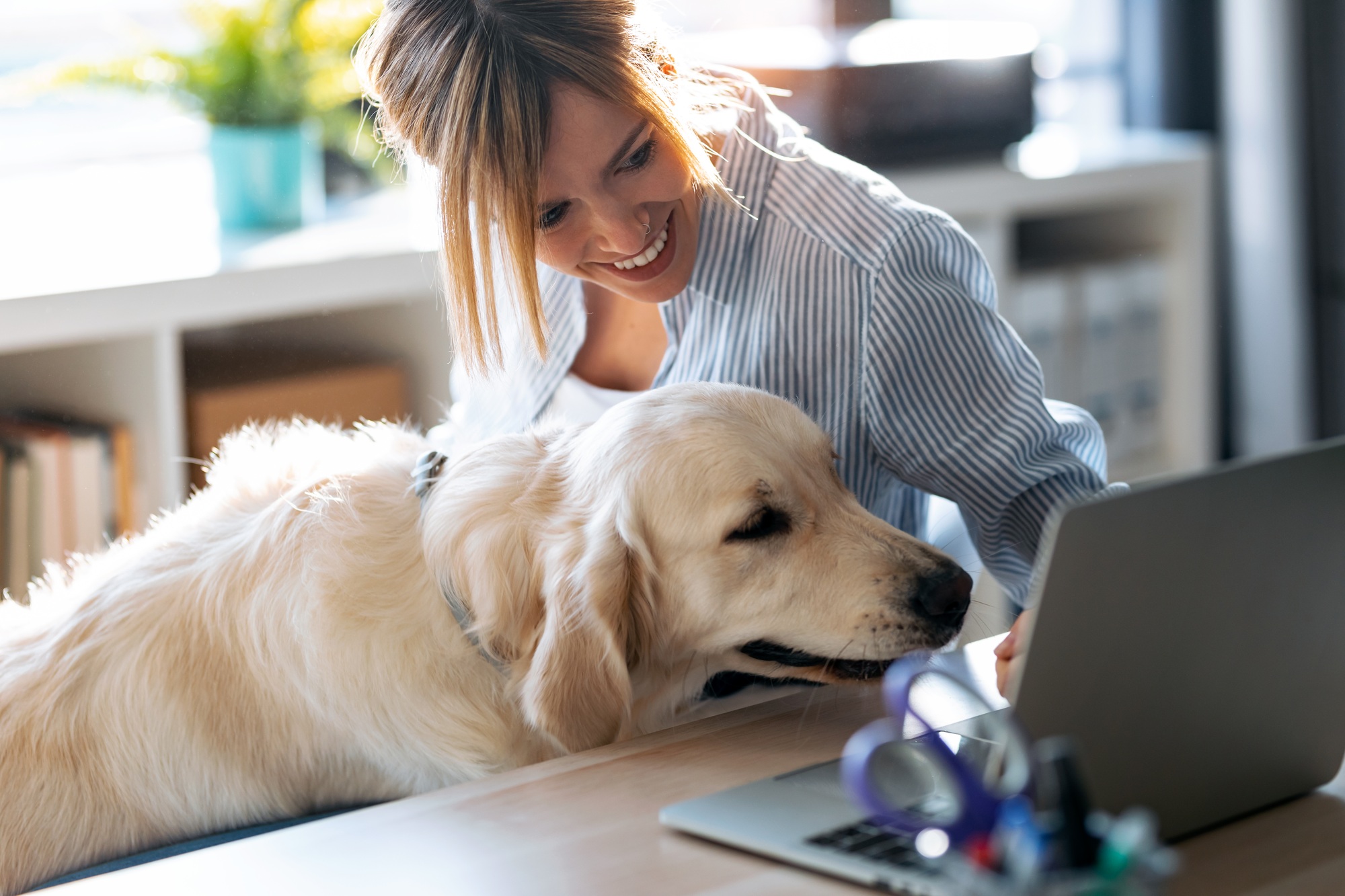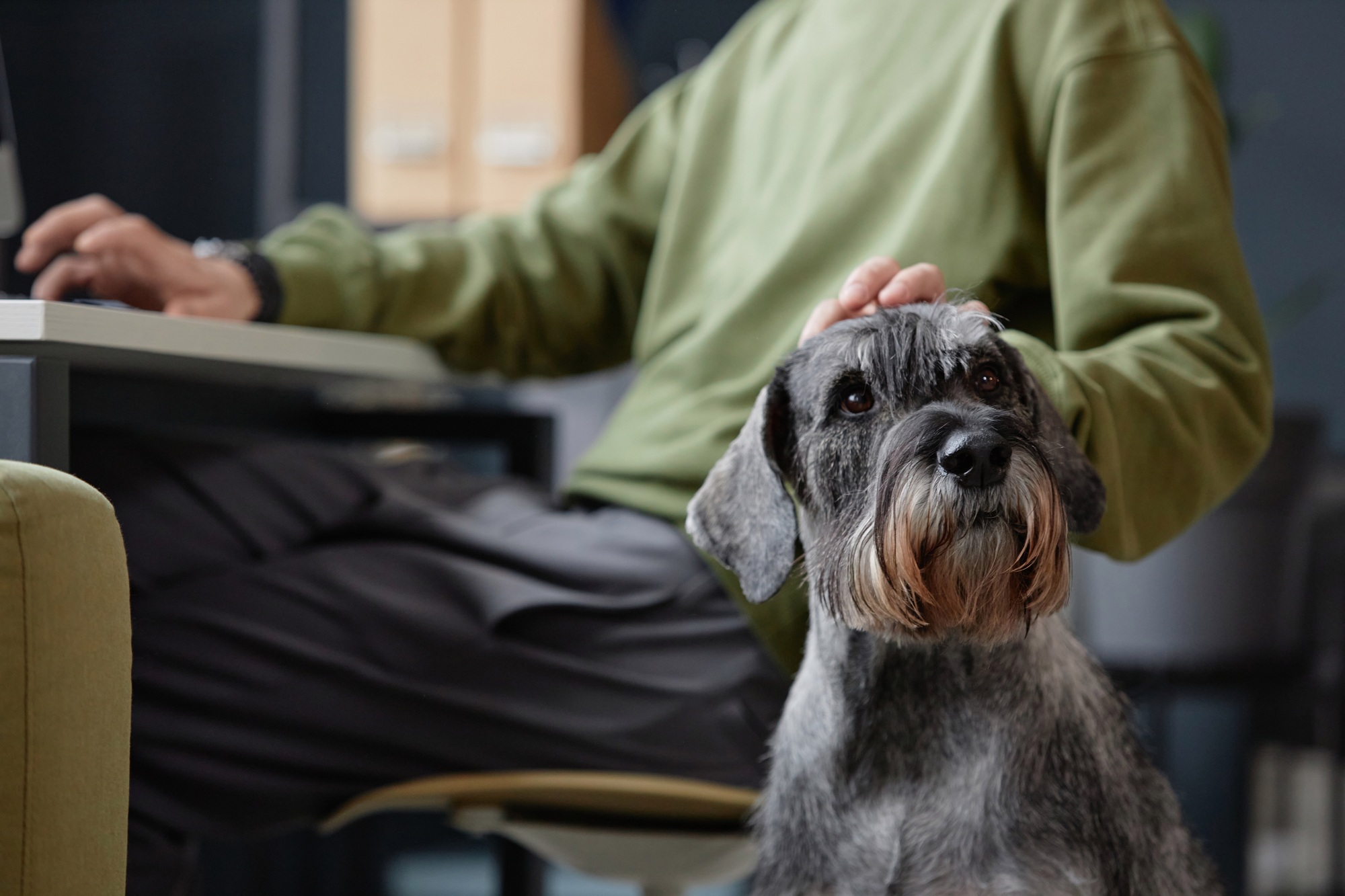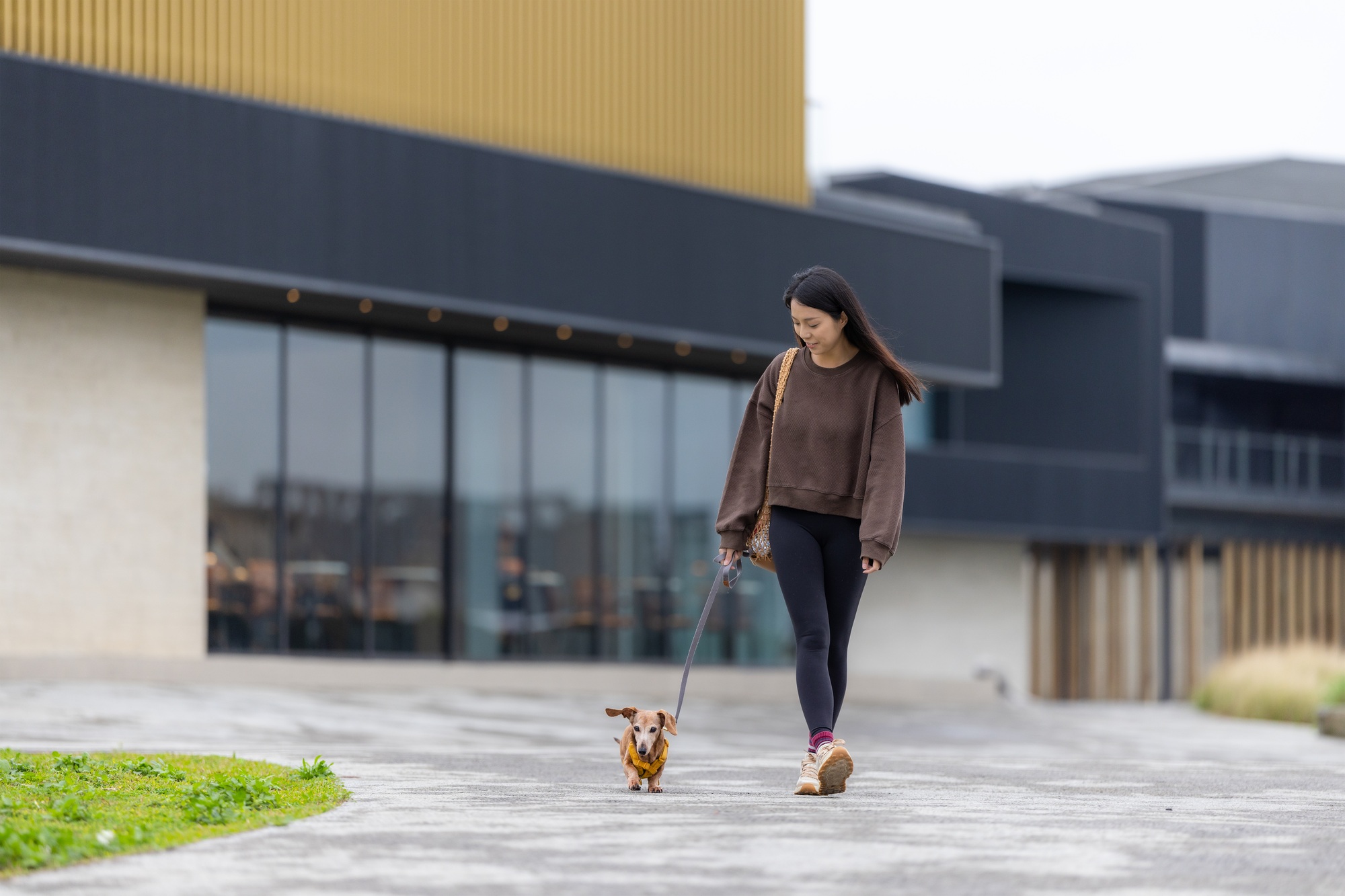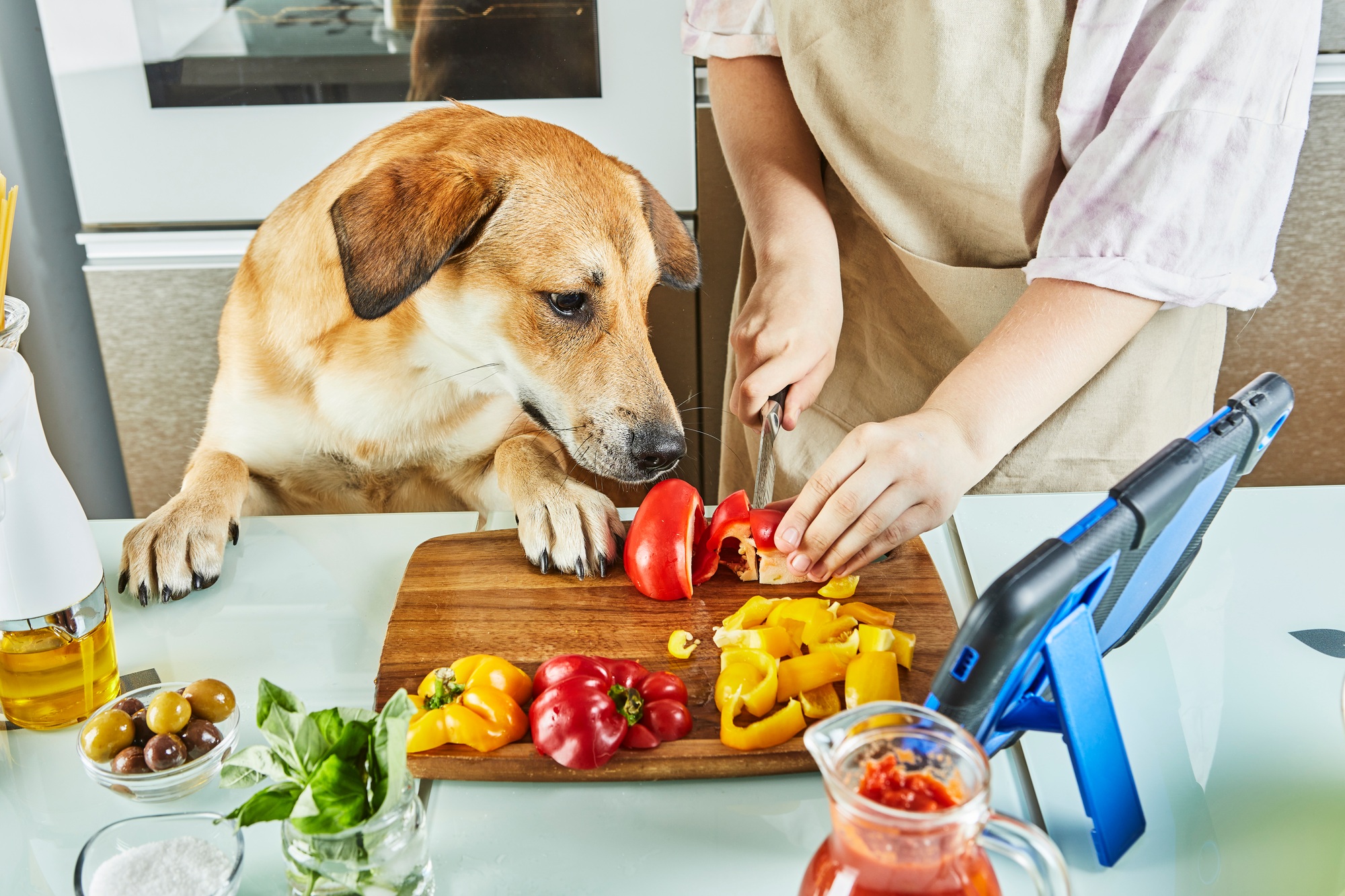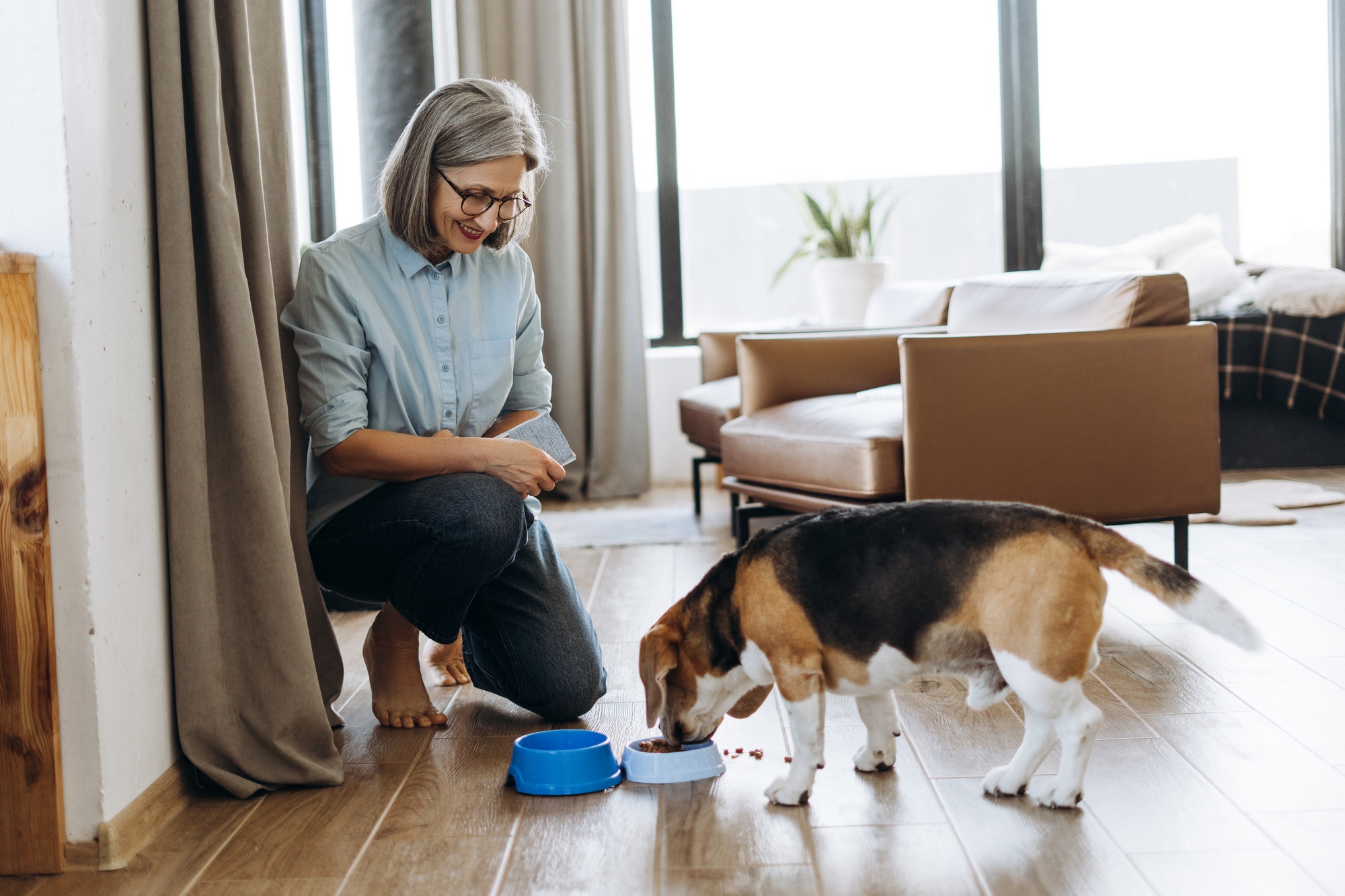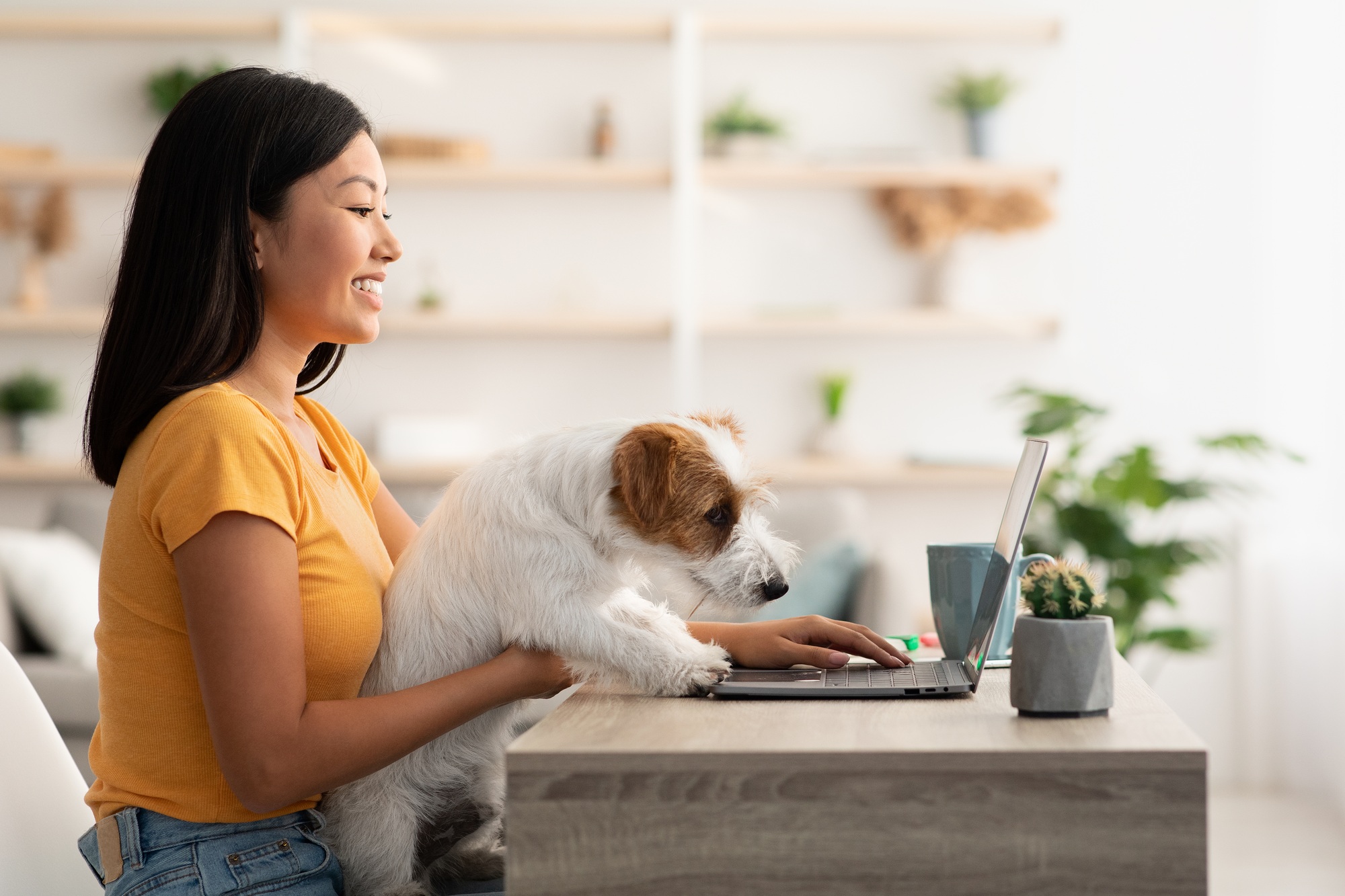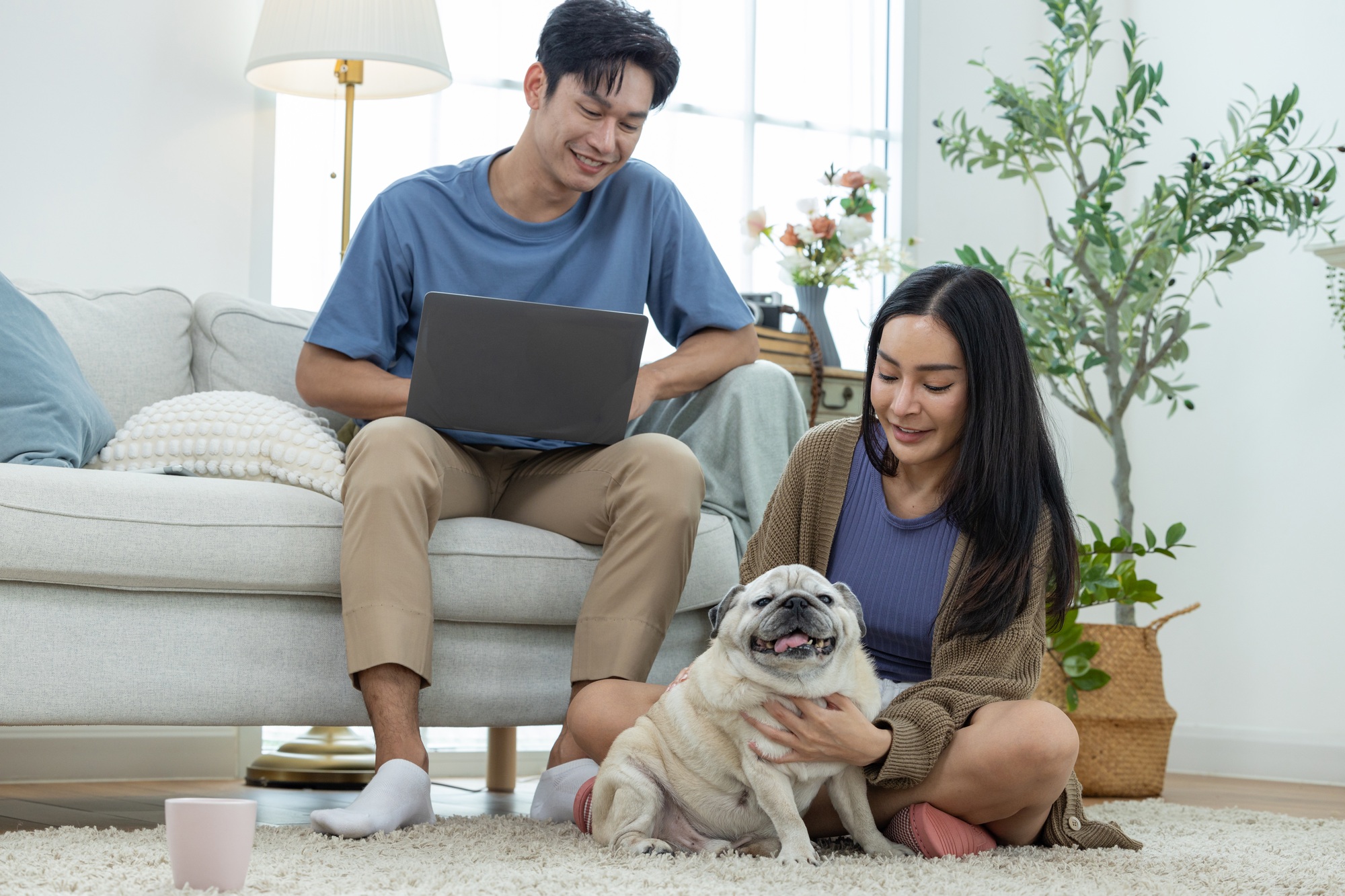
Having a dog around while working from home can be a double-edged sword. On one hand, they offer companionship, comfort, and stress relief, but on the other hand, they can become a major source of distraction if not properly managed. Whether it’s a wagging tail at your feet, barking at the door, or begging for attention in the middle of a Zoom call, the presence of a dog during your workday can have both positive and negative impacts on your productivity.
We’ll explore how dogs can influence your work environment and offer tips on how to balance the joy they bring with the focus needed to get your tasks done. Is your dog a blessing or a curse? Let’s find out.
1. The Positive Side: How Dogs Enhance Your Workday
1.1 Stress Reduction and Emotional Support
Having a dog by your side while working from home can be a huge emotional boost. Studies have shown that spending time with pets can lower levels of cortisol (the stress hormone) and increase levels of oxytocin (the “feel-good” hormone). This can help you feel more relaxed, focused, and productive throughout the day.
Your dog’s presence can provide much-needed emotional support, especially during stressful or challenging moments in your workday. Their unconditional love and companionship can help you stay calm, maintain a positive outlook, and reduce feelings of loneliness, which can be especially helpful for remote workers.
1.2 Increased Motivation to Take Breaks
When working from home, it’s easy to get caught up in the grind and forget to take necessary breaks. Having a dog encourages you to step away from your desk and go for walks or engage in playtime. This can be a great way to get your blood flowing, clear your mind, and return to your work with renewed focus.
Regular breaks are crucial for mental health and productivity, and your dog can serve as a constant reminder to move and stretch. Taking short breaks to play or walk your dog not only benefits their health but also improves your own focus and energy levels, ultimately making you more productive.
2. The Negative Side: How Dogs Can Disrupt Your Workday
2.1 Barking and Interruptions
One of the most common distractions when working from home with a dog is barking. Whether they bark at strangers, delivery people, or other dogs outside, the noise can be disruptive—especially during client calls, meetings, or deep focus time. Constant interruptions can break your concentration and lead to frustration.
If your dog is particularly vocal, it may be a good idea to take proactive steps to manage this behavior. Training your dog to stop barking on command or providing them with distraction toys can help minimize interruptions. Additionally, setting up a quiet area for your dog during important calls or tasks can help reduce the noise level.
2.2 Demanding Attention at Inconvenient Times
Dogs are notorious for seeking attention when you’re least able to give it to them. They might nudge your hand while you’re typing, bring you their toy during a phone call, or whine for treats while you’re in the middle of a presentation. These small interruptions, while seemingly innocent, can add up and impact your productivity throughout the day.
Managing these interruptions requires creating a routine that balances attention to your dog with uninterrupted work time. For example, schedule regular play sessions and attention breaks throughout the day, so your dog gets the attention they need without distracting you when you’re in the middle of important tasks.
3. Finding the Balance: How to Minimize Distractions and Stay Productive
3.1 Set Up a Designated Dog Space
One of the best ways to reduce distractions is by creating a designated space for your dog during your work hours. This could be a cozy dog bed, crate, or a gated-off area where your dog feels safe and comfortable but isn’t in direct proximity to your work area. This gives your dog a sense of security and a space to relax while you focus on your tasks.
By setting boundaries and ensuring your dog has their own space, you can reduce the likelihood of them wandering into your workspace and demanding attention during important tasks. You can also train your dog to go to their space when you’re busy or in meetings, reinforcing the idea that this is their “quiet time.”
3.2 Train Your Dog to Be Independent
Training your dog to be more independent can significantly reduce distractions during your workday. Start by teaching your dog basic commands such as “stay” or “go to bed,” and reward them when they follow through. This can help create a sense of structure and discipline, making it easier for you to focus on your work.
Gradually increasing the length of time your dog stays in their designated area can help them learn that it’s okay to be alone while you work. Training sessions should be short, positive, and consistent, so your dog learns that their time alone doesn’t mean they are being ignored or punished.
3.3 Use Interactive Toys and Puzzles
If your dog is prone to being overly demanding or disruptive, interactive toys and puzzle feeders can be a great way to keep them engaged while you work. These toys encourage your dog to problem-solve and stay occupied, helping them expend energy in a productive way. You can also use puzzle toys to provide a mental challenge and help your dog relax, reducing their need for constant attention.
When your dog is mentally stimulated, they are less likely to be restless or bored, which can lead to less disruptive behavior. Incorporating these toys into your routine can also help tire your dog out, making them more likely to relax during quieter moments of your workday.
4. Managing Work and Play: How to Create a Routine for You and Your Dog
4.1 Establish a Flexible Schedule
To prevent your dog from becoming a source of frustration or distraction, it’s essential to establish a flexible schedule that incorporates playtime, walks, and quiet periods. Set aside time during the day to engage with your dog, whether it’s a morning walk, a midday play session, or a quick cuddle break. This gives your dog the attention they need and prevents them from interrupting your work when you’re deep in focus.
By sticking to a routine that includes dedicated time for your dog, you can create a sense of balance that benefits both your productivity and your pet’s well-being. Remember that a tired dog is a happy dog, and regular exercise can help them stay calm and relaxed during your work hours.
4.2 Communicate with Your Dog
Communication is key to maintaining a peaceful work environment while living with a dog. Dogs respond well to positive reinforcement and consistent routines. By setting clear boundaries and communicating these boundaries to your dog, you can create a mutually respectful environment where both you and your dog know when it’s time for play and when it’s time to focus.
If your dog is consistently disruptive during work hours, it may be helpful to reassess their daily needs. Are they getting enough exercise? Are they eating the right foods? Are they experiencing anxiety or boredom? Understanding and addressing the root cause of the behavior can help prevent unnecessary distractions and promote a healthier work-life balance for both you and your pet.
5. When to Seek Professional Help
5.1 Consult a Trainer or Behaviorist
If your dog’s behavior becomes too difficult to manage during work hours, it may be time to seek professional help. A dog trainer or behaviorist can offer personalized advice and strategies to address disruptive behavior. They can work with you and your dog to build positive habits, reduce anxiety, and improve overall behavior.
If your dog is struggling with separation anxiety, excessive barking, or difficulty adjusting to your work-from-home routine, professional guidance can make a significant difference. A trained expert can help you implement techniques that promote a calmer, more focused work environment.
5.2 Veterinary Support for Health Issues
If your dog’s distractions are related to health issues, such as pain, anxiety, or restlessness, it’s important to consult with a veterinarian. Sometimes behavior problems are linked to underlying medical conditions that can be addressed with proper treatment. A vet can help identify any health concerns that might be affecting your dog’s behavior and recommend appropriate therapies or medications.
Conclusion
Your dog’s presence during your workday can be both a blessing and a curse, depending on how you manage the distractions they cause. While they offer stress relief, emotional support, and motivation for breaks, they can also interrupt your focus and productivity. By creating a structured routine, setting boundaries, and using positive reinforcement, you can strike a balance that works for both you and your dog. Ultimately, with the right approach, your dog can become a companion that enhances your work-from-home experience, rather than a source of distraction.


